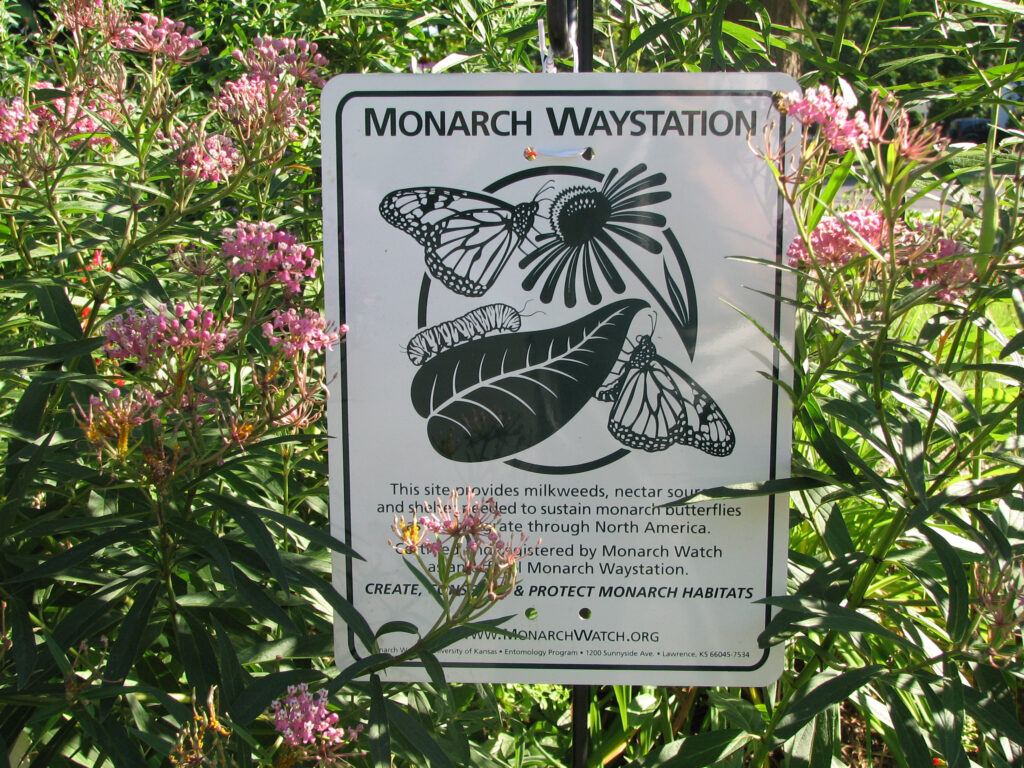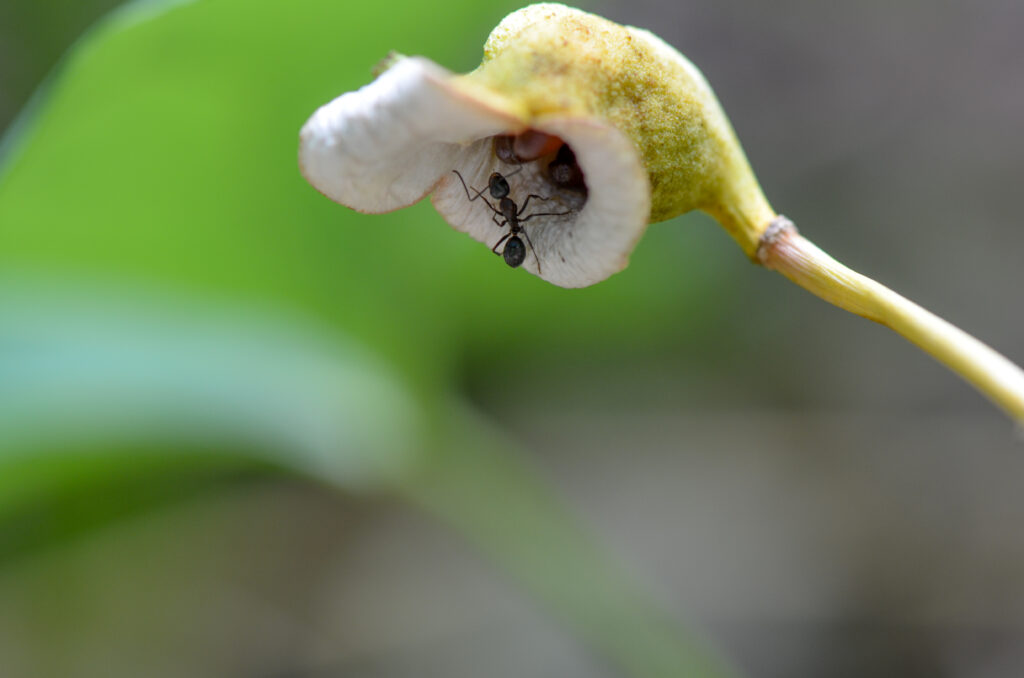
I frequently give tours of my suburban yard, but it’s not the typical garden featured on most tours–those “ooh and ah” gardens of flowerbeds constantly in bloom, neatly mulched, surrounded by perfect velvety lawns. My yard is a habitat garden, full of native plants, self-mulched, with a narrow border of good-enough lawn, interspersed with log-lined mulched paths. When I give a tour, I have some explaining to do!
Besides identifying plants, I talk about why we grow them—and the reason is never “because they’re pretty”! Of course, most flowers are pretty, and who could deny the beauty of native plants such as culver’s root (Veronicastrum virginicum)? Also beautiful is the diversity of foliage shapes and colors. For example, though foamflower (Tiarella cordifolia) blossoms are beautiful, after their brief bloom season ends, the foliage adds beauty of its own as well as serving as a groundcover.
But my yard is full of native plants not because they’re beautiful, but because they support life, now and in the future. An important message I hope visitors take away from my garden tour is that of landscape designer Mary Reynolds: “The time for treating our patches of the planet as blank palettes for our creative expressions is over. Now we need to become guardians, not gardeners, to weave the web of life back together, patch by patch.”
The web of life is woven back together by native plants. Many insects, the foundation of the food web, need particular natives, and increasingly these are missing. Non-native, merely ornamental plants, may indeed have unblemished leaves and “pretty” flowers but they aren’t weaving together the web of life.
Sadly, I have to report to our tour visitors that I see fewer butterflies and other insects than I had in the past. For example, my pearly everlasting plants (Anaphalis margaritacea) used to be full of American lady caterpillars’ larval nests. Though temporarily unsightly, those whitish blobs became beautiful butterflies, and the plants soon recovered. Fewer butterflies and other insects is a steep price to pay for untouched leaves.


A noticeable difference between the usual ornamental garden and my habitat garden is that there’s no one time when most plants are blooming. My habitat garden is a dynamic, living system. Visitors could return for another tour in a few weeks, and they’d see a different set of plants in bloom.
Whether they’re currently blooming or not, many of the plants have a story to tell. One of my favorite stops on the tour is our twinleaf plant (Jeffersonia diphylla). Its “smiling green Martian” seedpods are intriguing, but more important, I use them as an example of the role of ants in the garden. Ants take the seeds back to their nest, eat their fatty deposits, and then discard them, thus dispersing the seeds. This is a service ants provide for many other plants, too, such as trillium. In fact, contrary to popular belief, ants provide many benefits to gardens.
I also explain why we manage the yard as we do. Since our goal is to support life on earth, we use no pesticides or fertilizers. Our plants thrive in the healthy soil we preserve by leaving the leaves to decompose, and we protect the soil structure by staying on the paths and using stepping stones in the garden beds.
In addition to protecting biodiversity, we point out measures we take to protect climate, such as leaving space in my smallish yard for a “solar” clothes dryer. And by having a very small lawn, we prevent CO2 emissions from fossil-fueled lawn equipment. Just as important, limiting hardscaping and having lots of greenery from the ground to the top of our tallest trees itself protects the climate by not reflecting heat. It is indeed cool and refreshing in my yard!





In addition to our habitat garden, our tour features a large organic vegetable and fruit garden in the back yard. We hope the sight of all that fresh, delicious food inspires tour visitors to grow at least some of their own food, not only producing healthy food for themselves, but decreasing the amount of plastics and fossil fuels used in industrial agriculture.
Of course, tour visitors wonder how my unconventional landscape is accepted, and I’m happy to report to them that we’ve had many positive comments about our habitat garden. I point out some design features that are important. First, I didn’t just stop taking care of my yard and just let it grow wild. My beds are intentionally planted, and the front yard features many flowering plants. I maintain a neat curving border between the strip of lawn and the planting beds and have neatly mulched paths. I also display signs from national organizations that explain the purposes of my yard, such as it being a Certified Monarch Waystation. And best of all, our tour visitors themselves find our yard to be beautiful and a very enjoyable place to be!
Finally, as a grandparent, I emphasize to our tour visitors one big idea: We’re rapidly reaching climate and biodiversity tipping points. It’s our obligation to be good ancestors and leave the next generations a living planet. Habitat gardens full of native plants are an essential part of reaching that goal.
Janet Allen’s garden is described on the Our Habitat Garden website ourhabitatgarden.org. She is president of the Wild Ones Habitat Gardening in Central New York chapter (hgcny.org).
Views: 49




